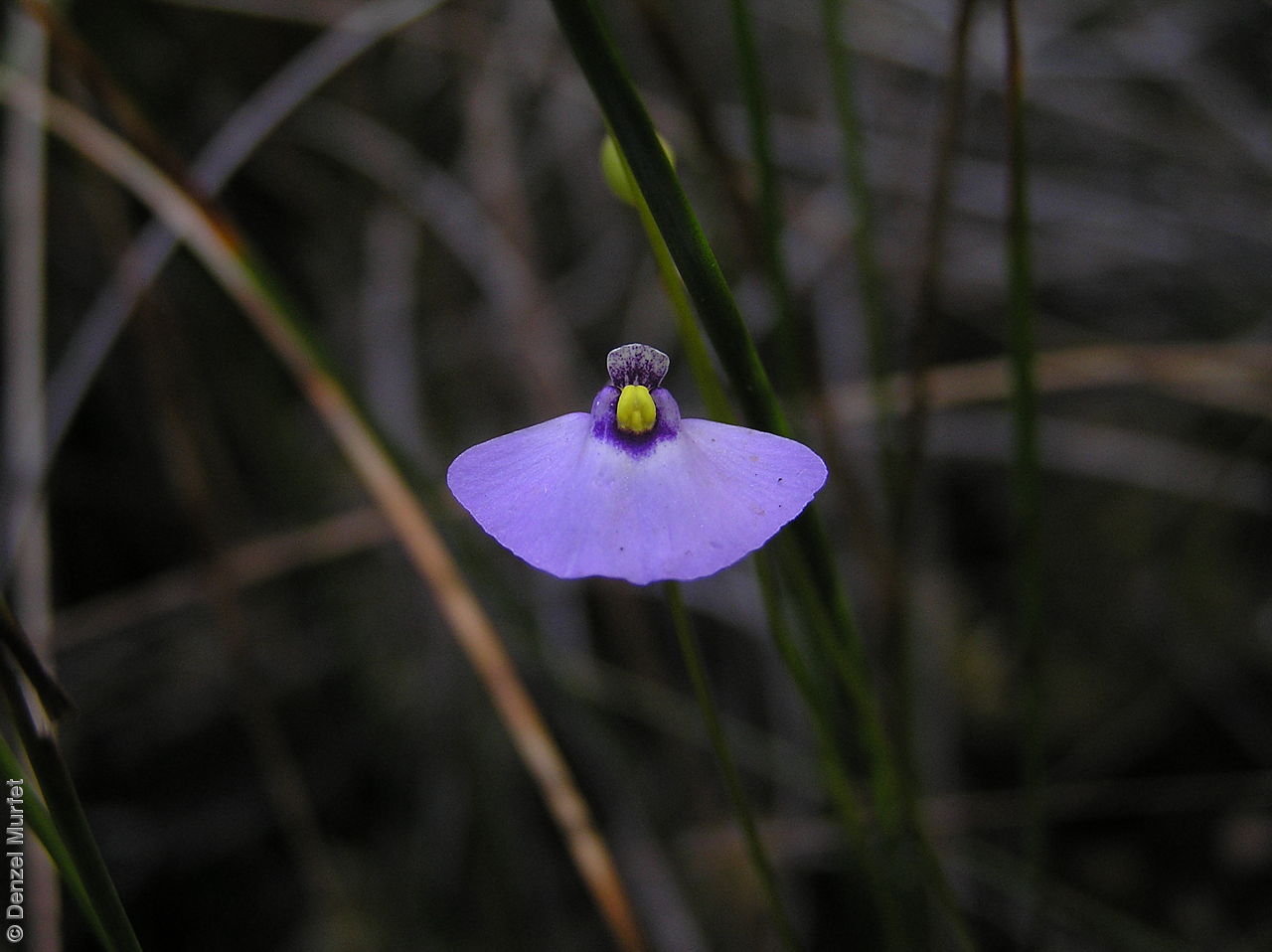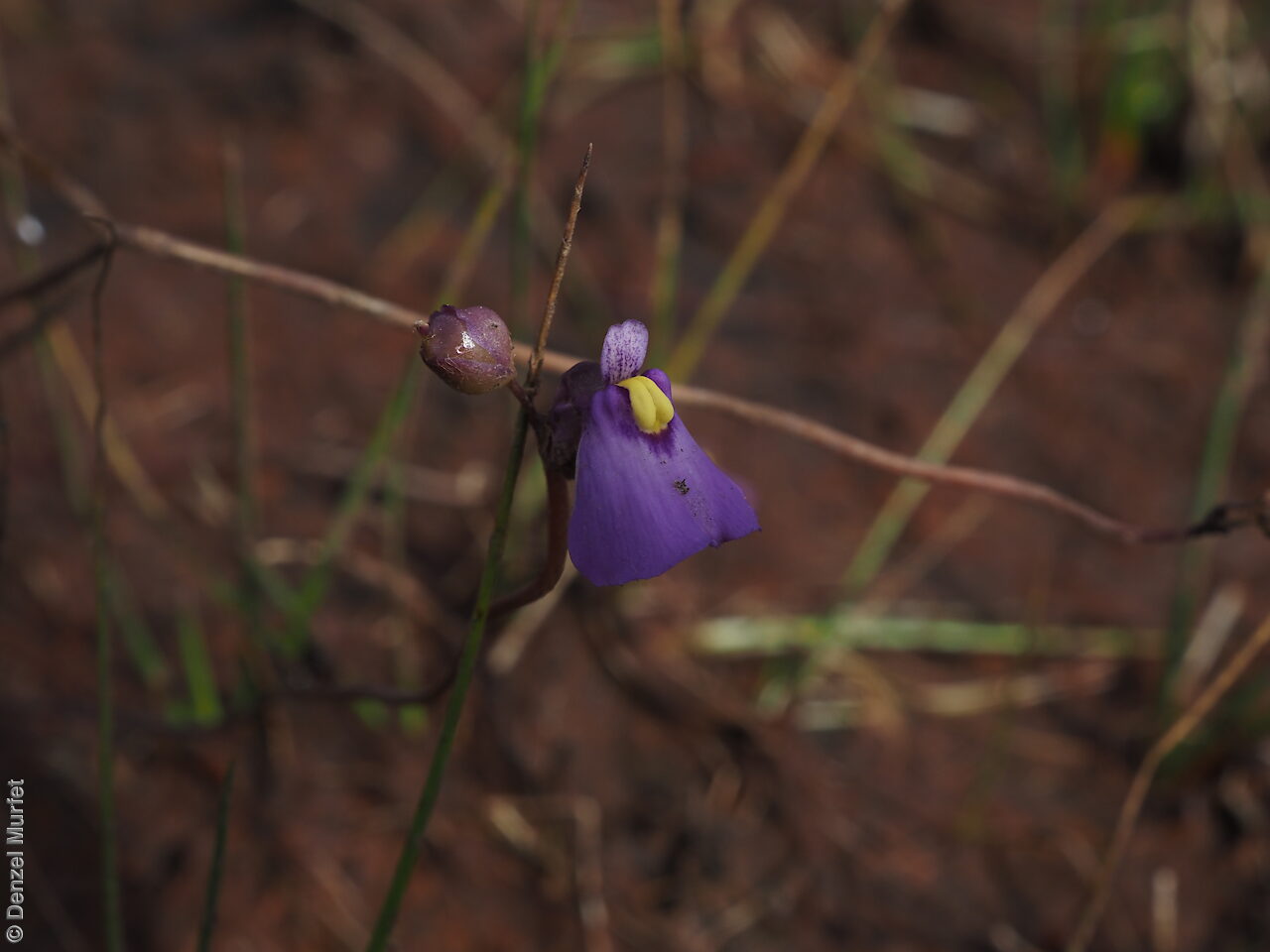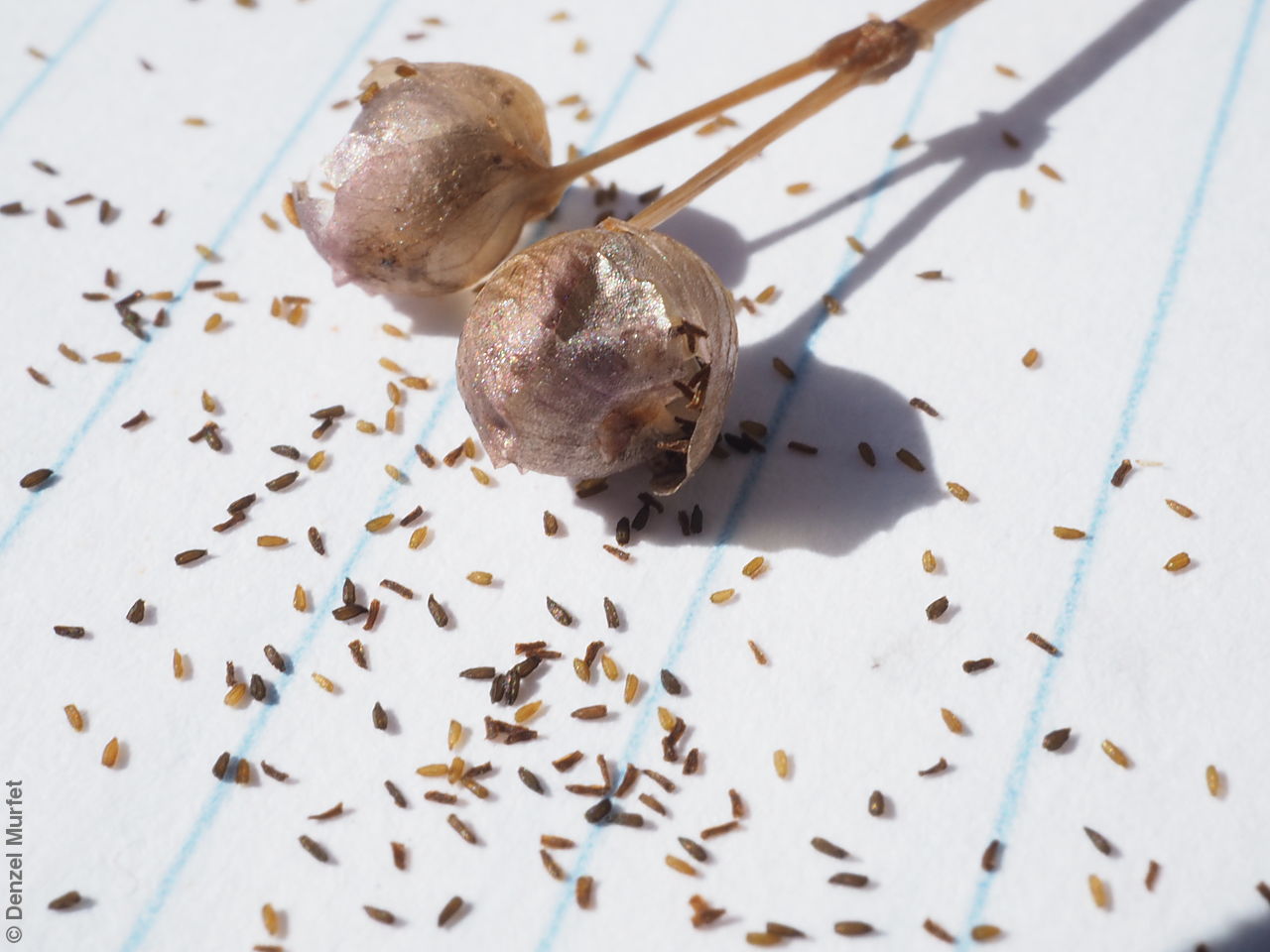




















Botanical art
Common names
Bill's Fairy Apron
Barker Bladderwort
Purple Bladderwort
Etymology
Utricularia from the Latin 'utriculus' meaning a small bottle or bladder; referring to a small insect trapping sac attached to the underground leaves. Barkeri named after Dr William (Bill) R. Barker, former Chief Botanist of the State Herbarium of South Australia, who has made significant contributions to Australian botany with studies of Australasian Scrophulariaceae and various other families.
Distribution and status
Found on Kangaroo Island and the South-east in South Australia, growing lowland swampy heaths. Also found in Victoria and Tasmania. Native. Rare in South Australia. Uncommon in the other states. Possible more common due to confusion with Utricularia dichotoma.
Herbarium regions: Kangaroo Island, South Eastern
AVH map: SA distribution map (external link)
Plant description
Tiny terrestrial herb. Leaves few, basal to flowering stem and on stolons, linear to narrowly obovate to ovate or spathulate, to 12 mm long and 0.6 mm wide. Inflorescence solitary, erect, to 28 cm long, with 1 to 3 light mauve flowers, upper lip oblong, distinctly constricted about the middle, lower lip much larger, fan-shaped. Flowering between October and January.
This species differs from Utricularia dichotoma with presence of basiolute bracts with upper and lower lobes
of equal length and corolla upper lip light mauve with purple flecks. Fruits are reddish brown globular capsule to 3.5 mm diameter.
Seed collection and propagation
Collect seeds between November and February. Collect mature capsules, those turning reddish brown colour, fat and containing brown seeds. Can collect individual capsules or break off the whole stem. Place the capsules in a tray and leave to dry for two weeks. Then rub the capsules gently by hand to dislodge the seeds. Use a sieve to separate the unwanted material. Store the seeds with a desiccant such as dried silica beads or dry rice, in an air tight container in a cool and dry place.
| Location | No. of seeds (weight grams) | Number of plants | Date collected | Collection number Collection location | Date stored | % Viability | Storage temperature |
|---|---|---|---|---|---|---|---|
| BGA MSB | 28,700 (0.64 g) 28,700 (0.64 g) | 100+ | 14-Dec-2017 | DJD3721 South Eastern | 30-Jun-2018 | 95% | -18°C, -80°C |
| BGA | 61,900 (0.520 g) | 100+ | 1-Dec-2021 | BKB21 Kangaroo Island | 7-Jul-2022 | 95% | -18°C, -80°C |
Number of plants: This is the number of plants from which the seeds were collected.
Collection location: The Herbarium of South Australia's region name.
% Viability: Percentage of filled healthy seeds determined by a cut test or x-ray.